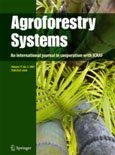The December 2004 tsunami brought Aceh and its coastal zone to the forefront of public interest and discussions on the environment and development. Conversi on of mangrove forest to brackish-water aquaculture ( tambak ) in the 1980s almost certa inly increased the death toll from the tsunami. The devastation was unprecedente d in recorded human history. Thousands of hectares of brackish water aquaculture ( tambak ) mature for harvest, which is the main livelihood for the NAD province coastal comm unity, were swiped away in minutes. Tambak rehabilitation is a strategic intervention aimed at restoring the livelihoods of thousands of people living in coastal areas of the province. Although external assistance is required, post tsunami tambak aquaculture rehabilitation efforts in NAD pr ovince by external parties (such as donor institutions and development drivers) have been hindered by their limited knowledge of the socioeconomic and environment aspects of tambak aquaculture; hence, to determine the appropriate interventions for tambak rehabilitation which will restore community life post tsunami. The objective of this study is to contribute to the debate on rehabilitation strategies by clarifying the social, economic and legal issues that relate to the development of tambaks in the mangrove zone. Five aspects of tambak systems explored in the study: tambak holding patterns in NAD province pre-tsunami, job opportunities in tambak aquaculture, tambak production systems, legal aspects of tambak ownership in NAD province and tambak management patterns, pre and post tsunami. Data collection was conducted over 20 days (2-21 December 2005) using the Rapid Rural Appraisal technique; secondary data documentation, field observation, group interviews, and focus group discussions using semi-structured interview guidelines. Brackish water aquaculture in Aceh started in the 1940s by Ulee Balang, in the form of traditional earthen pond systems that depended on ti dal water exchange for wild seed supply and maintenance of water quality. Brackish-water pond establishment along the north-east coast grew rapidly in the late 1970s in line with the development of semi-intensive shrimp farming. Extensive conversion of mangrove forest for shrimp farming in Aceh began in the early 1960s, when a Medan-based investor provided a credit scheme for shrimp culture to groups of 40 farmers. With regard to property rights, not all tambak are established on privately owned land. It is estimated that 19.8% of the tambak area in the 12 villages under study are established on non-private land and only 36.5% of those on priv ately-owned land have land certificates. Land with this kind of secured title is mostly found in the urban areas closest to Banda Aceh (Tibang and Lambaro skep, 99.5% and 44.9% respectively) and Pidie (Baroh Lancok, 43.9%). In rural areas, the amount of private land with land certificates is very low, less than 15%. It is important to develop a sustainable strategic liv elihood for the future on lands where people are vulnerable to eviction. The cost of tambak rehabilitation per hectare is estimated at between Rp. 5.89 million and Rp 32.41 million depending upon the leve l of damage and the method used; capital intensive (using back hoe) or labor intensive (done manually). Labor intensive rehabilitation will never work to reconstruct severely damaged tambak , while other level damage can do both.
DOI:
https://doi.org/10.5716/WP15176.PDF
Altmetric score:
Dimensions Citation Count:






















